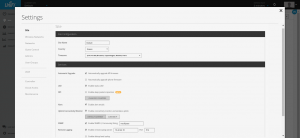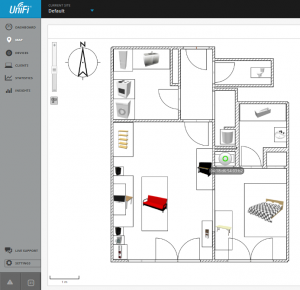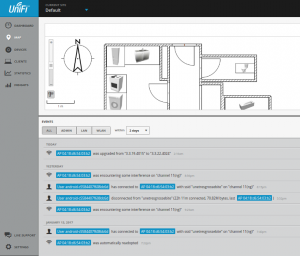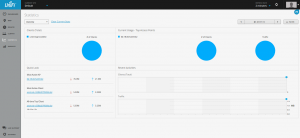UniFi
While upgrading my network, I stumbled upon some UniFi access point a friend left over, a few months ago. It’s been lying there long enough, today I’m powering it on.
UniFi are Ubiquiti devices. If you are not familiar with these, Ubiquiti aims to provide with network devices (switch, router, network cameras, access points) that are controlled by a centralized web service. Once a device is paired with your controller, the VLANs, SSIDs, … you’ve already defined would be automatically deployed. Although I’m not at all familiar with their routers, switches or network cameras, I already worked with their access points covering large offices with several devices, roaming, VLANs, freeradius, automated firmware upgrades, PoE, … These access points can do it all, have a pretty good range of action in comparison with the world-famous WRT54-G, and can serve 100s of users simultaneously.
Unifi is also the name of the controller you would install on some virtual machine, managing your devices. Having installed their package on your system, you should be able to connect on your instance’s port 8443 using https. Once you’ld have created your administrative user, then a default SSID: you would be able to discover devices in your network, and pair them to your controller.
The Unifi controller allows you to define a syslog host, SNMP community string, … And also shows a checkbox to “enable DPI”, which requires an USG (Unifi Security Gateway). Pretty much everything is configured from this panel.
The Unifi controller would also allow you to import maps of the locations you’re covering. I could recommend Sweet Home 3D to quickly draw such map. On a small setup like mine, this is mostly bling-bling, still it’s pretty nice to have.
The controller provides with a centralized log, archiving events such as firmware updates, clients connections, when a user experienced with some interference, … Pretty exhaustive.
The controller also offers with detailed statistics per SSID, access point, client device, … allow tagging or blocking hardware addresses.
Unifi intends to provide with enterprise-grade devices, and yet their cheapest access points prices are comparable to the kind of SoHo solutions we all have running our home network.
Even though you would never use most of the features of their controller, and even if you do not need to deploy several access points covering your area, UniFi access points can still be relevant for their ease of use, features set and shiny manager. And especially if your setup involves several devices with similar configurations: you’ll definitely want to give UniFi a shot.




